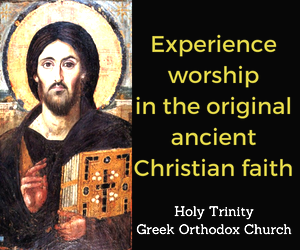
My wife and I were looking for Judaica on Etsy. We came across a reproduction of Michelangelo’s “Moses,” which quite obviously has horns on its head. I wondered aloud whether the myth that Jews have horns arose as a result of this work of art. It turns out that the origin of this absurd falsehood goes back to a time well before the 16th century, when Michelangelo created “Moses.”
Saint Jerome, who lived in the 4th and 5th centuries, translated the majority of the Bible into Latin, creating what is commonly known as the Vulgate. Many sources, online and otherwise, insist that Jerome mistranslated a Hebrew word as “horned” (cornuta in Latin) when, in fact, it should have been translated as “projecting rays of light.” The passage in question is Exodus 34:29-30:
And when Moses came down from the Mount Sinai, he held the two tables of the testimony, and he knew not that his face was horned from the conversation of the Lord. And Aaron and the children of Israel seeing the face of Moses horned, were afraid to come near.
For the record, I’d be afraid to come near a horned Moses, too.
Some scholars see the situation otherwise. According to them, Saint Jerome didn’t mistranslate the Hebrew at all. Ruth Mellinkoff’s “The Horned Moses in Medieval Art and Thought,” a book of scholarly essays on the subject, explores the nuances of this theory quite thoroughly. The argument from those who view “horned” as a correct translation is based on other writings of Jerome, which suggest that Jerome saw Moses’ horned condition as a metaphor for having been glorified by his contact with God on Mount Sinai.
Unfortunately, even if Jerome meant to preserve the Hebrew’s description of Moses’ glorification, the idea of a Jew with horns hasn’t benefited Jews throughout the centuries. Even today, Jews may encounter questions about horn removal. For their part, anti-Semites find it easy to make a connection between Jews’ supposed hornedness and the devil himself. Luckily, our legendary sense of humor has helped us cope with more than 1,500 years of being compared to livestock and/or the Prince of Darkness.







Wow! I’d been curious where that idea came from, too. Thanks for doing the research!
The horns r a symbol of the glory of the old covenant, the judging god: “for I, Yahweh your God, am a jealous God, visiting the iniquity of the
fathers on the children, on the third and on the fourth generation”. This is the power that the Israelites feared, when Moses came down.